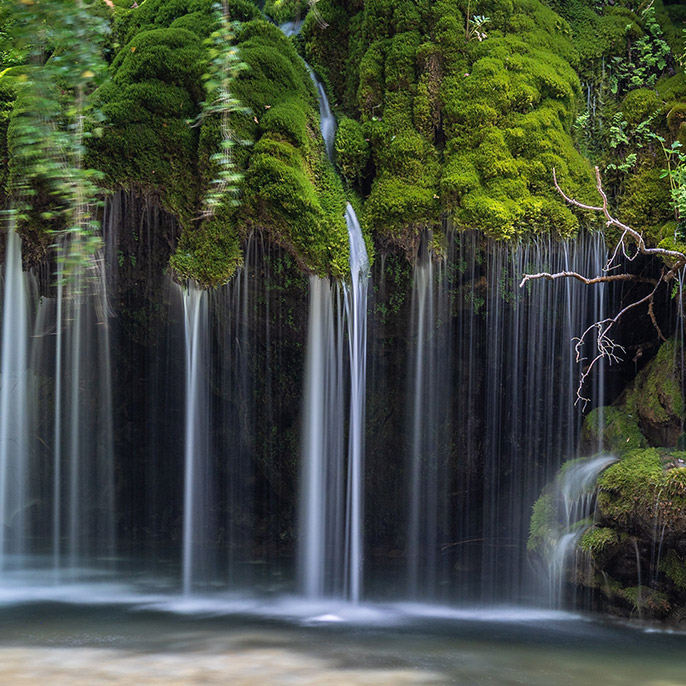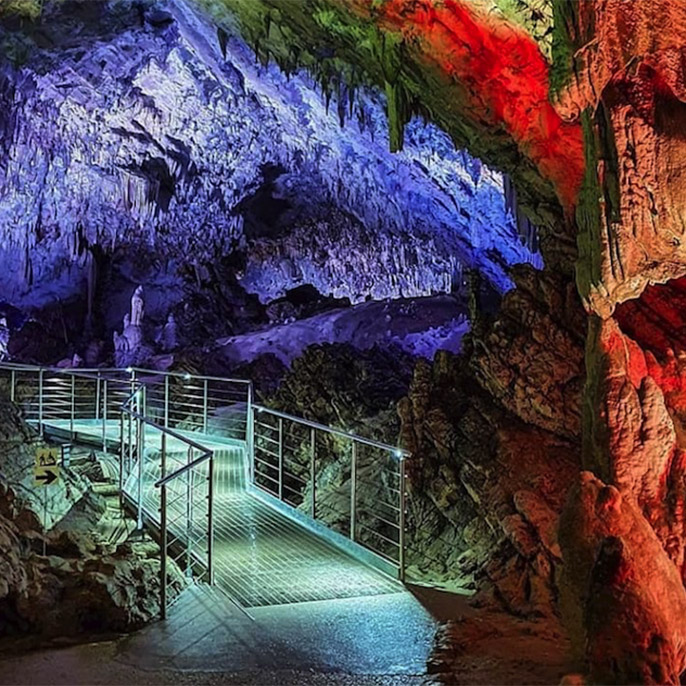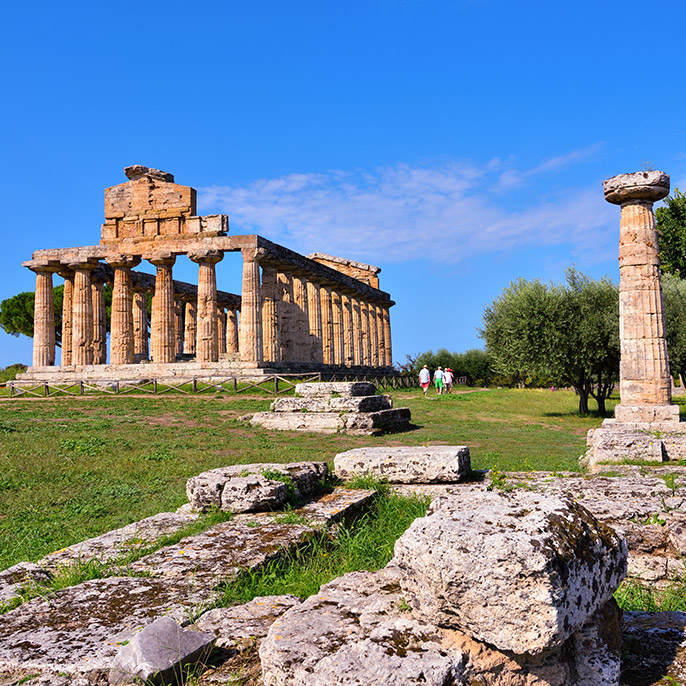Experience the untouched beauty of our coastlines by navigating between two extraordinary regions: the coast of Maratea and the Masseta and Infreschi Marine Reserve, departing from the charming Villammare. Explore some of Italy’s most captivating seaside towns and dive into the crystal-clear waters of the protected Marine Reserve of Infreschi, traveling along the Masseta coast to Maratea.
If you’re passionate about history and culture, the territory invites you to discover the ancient settlements of Paestum and Velia, true archaeological treasures that bring the soul of Cilento to life—a land rich in wonders waiting to be explored.

Maratea Coast
Starting from Villammare, you’ll reach the Midnight Channel, the border between Campania and Basilicata, passing through captivating scenes like the famous “Spigolatrice di Sapri” on the Scialandro rock. Along the way, dive into the turquoise waters of the Cartolano Caves and the Grotte delle Colonne, where cold spring waters provide a refreshing break.
This itinerary offers views of both the Campanian and Lucanian coasts, with towering mountains, Bourbon towers, hidden coves, and the striking Black Beaches near Sant’Ianni Island. The experience concludes with a lunch stop at the picturesque Maratea harbor.
Baia degli Infreschi and Cala Bianca
Embark on a journey along the Infreschi coast, departing from the Marina di Camerota harbor, and explore spectacular caves like the Lovers’ Cave, Monte di Luna Cove, Noglie Cave, and the captivating Blue Grotto. Along the way, you’ll also uncover two stunning beaches: Pozzallo Beach and Cala Bianca, which was awarded as Italy’s most beautiful beach in 2013, famous for its smooth white pebbles.
The final stop is the Infreschi Bay, known for its crystal-clear waters, where you’ll enjoy a half-hour swim in one of the heavenly coves.


WWF Oasis and Capelli di Venere
For a breathtaking natural landscape, don’t miss the waterfalls of Casaletto Spartano. Here, the Rio Bussentino creates unique plays of water and light, reachable from the “Capello” area, just one kilometer from the village. The main waterfall, named “Capelli di Venere” after the maidenhair ferns, is renowned for its lush vegetation and small natural pools where, even in summer, the water stays below 8°C.
Along the trail, which passes ancient mills and Norman bridges, you’ll encounter picturesque views leading to the WWF Oasis of Morigerati. Here, the Bussento caves and the river-carved canyon offer an unforgettable spectacle, complemented by the tropical moss station and the historic charm of Morigerati, a “Bandiera Arancione” village by the Touring Club Italiano.
Pertosa Caves
The Pertosa-Auletta Caves, nestled in the Alburni Mountains, are among Italy’s most fascinating speleological sites, popular with enthusiasts and tourists alike. The experience begins on a small boat through the subterranean Negro River, transporting visitors into the mysterious depths of the Earth.
As you continue on foot with expert guides, you’ll discover an intricate system of caves adorned with striking stalactites and stalagmites. The new lighting system, featuring over 3,000 meters of fiber optics and LED lights, enhances the natural beauty of these ancient formations.


Paestum
Between the sea and the hills of Capaccio lies the archaeological site of Paestum, recognized as a UNESCO World Heritage Site and an exceptional testament to Magna Graecia. Founded around 600 BC by Greek colonists from Sybaris as Poseidonia, in honor of the god Poseidon, the city worshipped Hera as its protective deity.
The visitable area includes a section of the city surrounded by defensive walls about 5 km long, protecting iconic temples like Hera I, called the Basilica, the Athenaion or Temple of Ceres, and Hera II, known as the Temple of Neptune. Nearby, the National Archaeological Museum houses Greek and Campanian art treasures, including the famous Tomb of the Diver.
Elea Velia
Velia, the ancient Elea, was founded around 540 BC by fleeing Phocaeans from Asia Minor, who took refuge on a promontory near modern-day Marina di Ascea. The city grew in a protected area between two rivers, where the inhabitants built two strategic ports for trade and founded a new community, shared with the peaceful Enotri people. Elea became a cultural and economic hub, thanks to the vibrancy of the Phocaeans.
Velia is particularly famous for the Eleatic School, founded by the philosopher Parmenides and carried on by Zeno and Melissus. In the 13th century, a castle was built on the acropolis, which later became a populated center until the 17th century. Today, the Elea-Velia archaeological park, a UNESCO World Heritage Site, preserves important structures: ancient walls, the South Marine Gate, and the rare example of a Greek full arch, Porta Rosa, dating back to the 4th century BC, which bridges two city districts.




